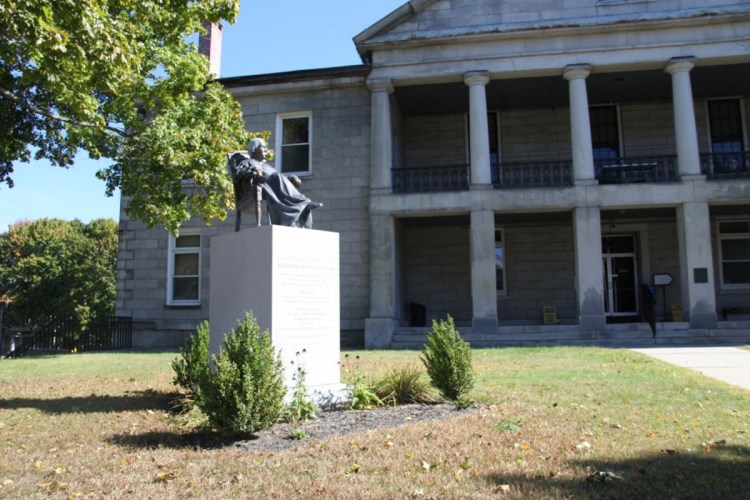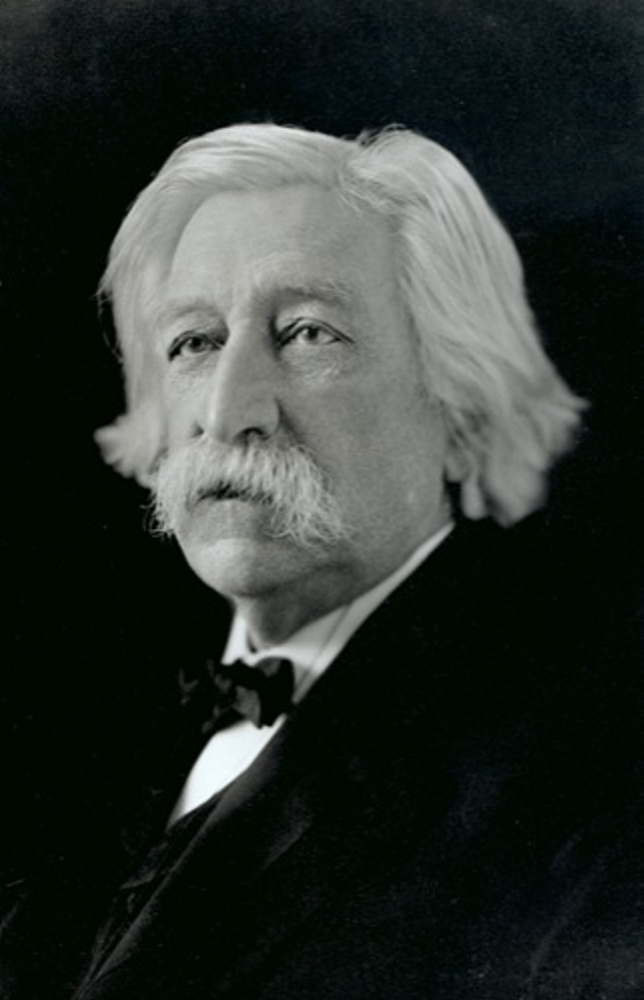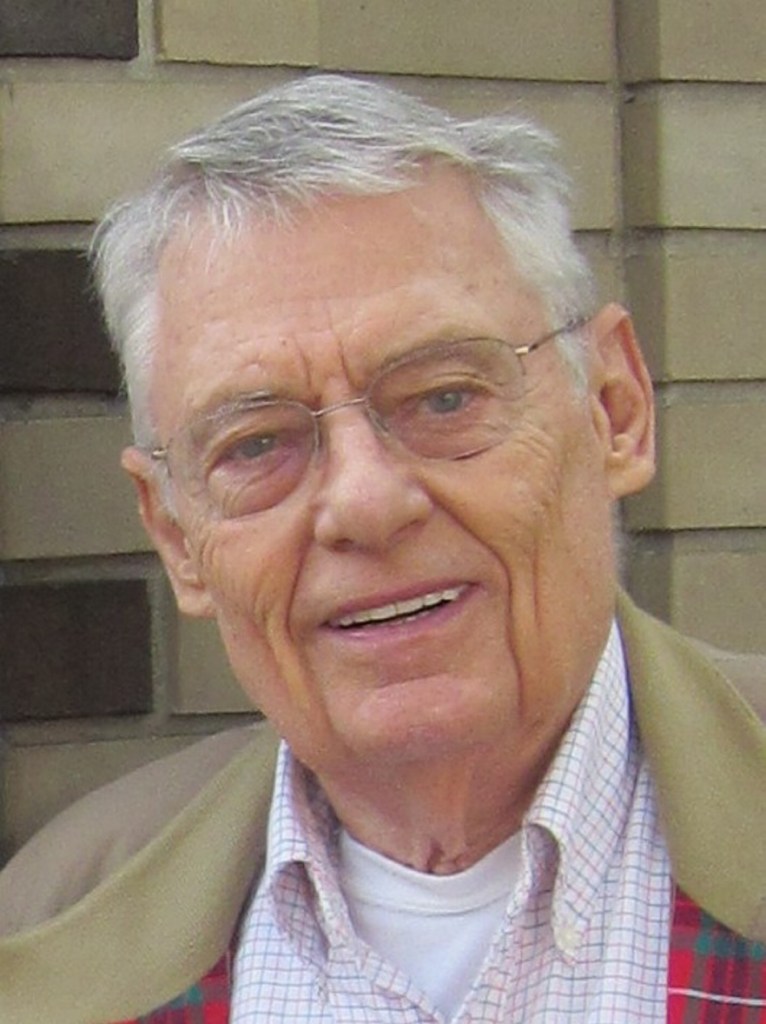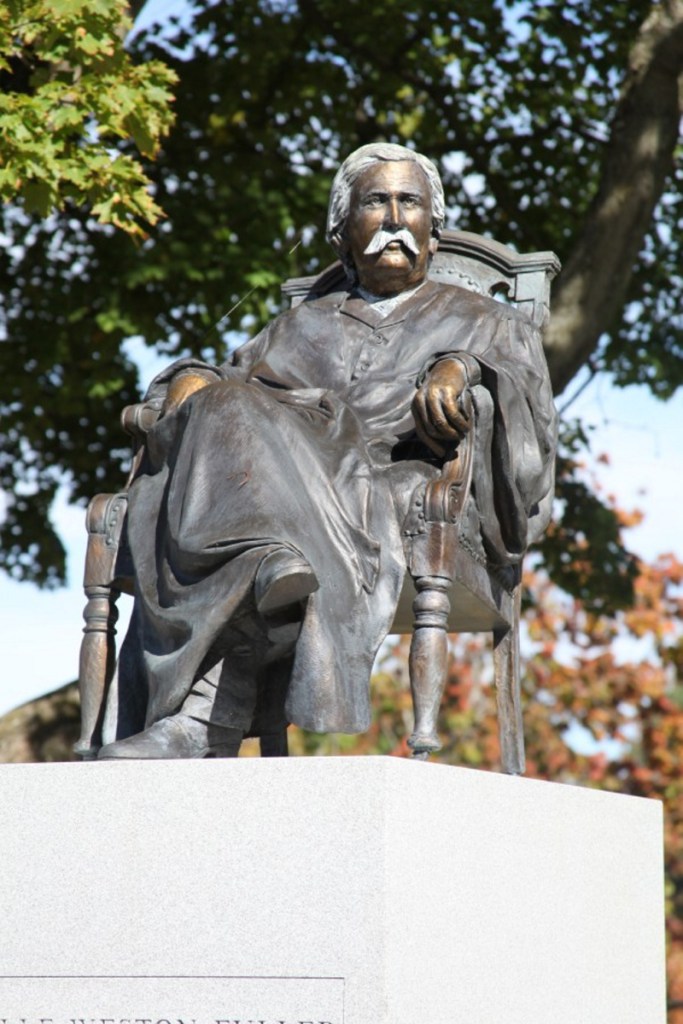The president is shaking up the established order. He nominates a man for appointment to the Supreme Court who appears qualified, but critics say the nominee has a troubling past and a controversial record in legal cases. Also, an election is only a few weeks away.
While all these facts describe the recent national drama involving President Donald Trump’s nomination of Judge Brett Kavanaugh, they also apply to the U.S. Senate’s deliberations in 1888 about whether to let a Maine native occupy the nation’s highest judicial post.
Eventually, after five months of wrestling with the question, the Senate accepted President Grover Cleveland’s nominee; and 130 years ago Monday, Melville Weston Fuller, born and raised in Augusta, took the oath of office as chief justice of the U.S. Supreme Court. His selection survived a contentious confirmation process that drew uncomfortable attention to his professional record as a lawyer and an Illinois legislator, and to his lack of military service a quarter-century earlier in the Civil War.
Fuller served 22 years on the court, the third-longest tenure among the nation’s 17 chief justices. Nonetheless, his legal legacy is negligible, according to Robert Fuller, a retired Augusta lawyer who now lives in Potomac, Maryland. A collateral descendant of the chief justice, Robert Fuller has studied his ancestor’s life extensively.
“Most of the cases he was involved in were overruled or legislated out of existence,” Robert Fuller said, citing as an example Pollock v. Farmers’ Loan & Trust Co., an 1895 case that found an 1894 federal law imposing an income tax to be unconstitutional.
Willard L. King, in a biography of Melville Fuller, notes that the 5-4 vote striking down the tax law appears to reflect the nation’s uneven distribution of wealth. Fuller and the other four justices who voted to nullify the law came from states that each had a larger per capita income — and therefore a higher tax obligation — than any of the home states of the four justices who voted to support the law. In any case, while the decision was important at the time, the 16th Amendment, adopted in 1913, made income taxes legal and the Pollock case irrelevant.
The Fuller court also produced, in 1896, the “separate but equal” Plessy v. Ferguson decision, which made racial segregation legal, and about which King’s 337-page biography is strangely silent — perhaps because King’s book was published in 1950, four years before the court’s landmark Brown v. Board of Education ruling weakened the Plessy decision substantially and ushered in the racial integration of schools and other public institutions.
While many Fuller court decisions failed to withstand the test of time, Melville Fuller left a durable legacy as an administrator, according to Robert Fuller. He fostered an atmosphere of collegiality on the court, insisting that justices greet each other with a handshake at the start of each session, regardless of what their differences might be.
“He was always a genteel fellow and was always interested in getting the court to come together as best he could,” Robert Fuller said.
Melville Fuller also found a way to reduce the court’s backlog of cases dramatically by influencing Congress to pass the Circuit Court of Appeals Act in 1891, thereby ridding the Supreme Court of a large number of patent cases and other work that Fuller thought should be handled elsewhere.
His skill at personal diplomacy and his effort to make the court run smoothly might have been a reaction to a tumultuous early childhood. As a boy, Fuller lived with his divorced mother and his brother at the Augusta home of their maternal grandparents, according to King’s biography. (In our own era, until recently that house was the St. Mark’s Episcopal Church rectory on Summer Street.)

Now better known as the former St. Mark’s Episcopal Church rectory, this house on Summer Street in Augusta was the home of Judge Nathan Weston and Paulina Weston in the early 19th century. U.S. Supreme Court Chief Justice Melville Fuller, who was the Westons’ grandson, spent much of his childhood living here.
In addition to the divorce’s social stigma, Fuller had to endure the embarrassment of his extended family being booted out of the South Parish Congregational Church congregation because Fuller’s grandfather Nathan Weston had allowed children to dance in his home. The family became Episcopalians after that.
Weston was chief justice of the Maine Supreme Judicial Court for seven years, so it would not be surprising to find Fuller drawn to that line of work. However, after graduating from Bowdoin College, he took a newspaper job with the Age, a Democratic-leaning Augusta newspaper that competed with the Kennebec Journal, which in those days favored the newly emerging Republican Party. This was during the period when one of the Kennebec Journal’s owners was James G. Blaine, who also was destined for national prominence.
Fuller’s newspaper career did not last long. He attended Harvard Law School and was admitted to the bar in 1855 in Augusta. In 1856, he left Augusta permanently for Chicago, where he set up his law practice. King attributes Fuller’s departure to the failure of his engagement to an Augusta woman, Susan Robinson. She later became the wife of John Noble Goodwin, a Maine congressman whom President Abraham Lincoln later appointed to be the first governor of the Arizona Territory. After her husband’s death in California, Susan Goodwin returned to Augusta, and Fuller always stopped to see her during his annual visits to Augusta, according to King. The Goodwins are buried in Forest Grove Cemetery on Augusta’s west side.
Fuller’s law career in Chicago included many cases that ended up in the Supreme Court, so he was familiar with the Washington political scene long before his appointment. In 1884, Cleveland defeated Blaine in the presidential election, ending a 20-year string of Republican presidencies. Fuller, who had met the future president in Chicago, visited him at the White House often.
“Fuller was a marked man among the President’s visitors because he never asked for anything,” King wrote.
Cleveland’s response to that modesty was a succession of job offers, the last of which, the chief justice’s post, Fuller finally accepted. To attain confirmation, he had to refute false accusations of having been a Southern sympathizer during the Civil War and of having benefited financially from the outcome of some court cases in which he was involved.
“But the greatest bar to Fuller’s confirmation yet remained,” King wrote: “There was a strong feeling among the Republican senators that party loyalty required them to refuse to confirm a Democratic Chief Justice with a national election only a few months away.”
It was a situation that was duplicated in 2016, when President Barack Obama nominated Judge Merrick Garland to the court. While the Republicans of 2016 blocked the Garland nomination, however, their counterparts of 1888 decided that voting against Fuller might hurt their chances in the November election. The Senate confirmed Fuller’s appointment, 41-20; and in November, Benjamin Harrison, a Republican, won the presidency, ousting Cleveland.
Fuller ran the court until 1910, when he died of a heart attack on July 4 at his summer home in the coastal Hancock County town of Sorrento. Public awareness of him waned quickly after that, even in his native city. Robert Fuller sought to counter that eclipse of his ancestor’s fame in 2013 by commissioning a statue of the chief justice. It now stands on State Street in Augusta on the lawn of the Kennebec County Courthouse, the building that contains the document Melville Fuller signed when he was sworn in as a member of the Maine bar.

This gravestone, shown Saturday in Augusta’s Forest Grove Cemetery, marks the grave of Susan Robinson, who was engaged in the 1850s to future U.S. Supreme Court Chief Justice Melville Weston Fuller. Robinson broke off the engagement, however, inspiring Fuller to move west and seek his fortune in Chicago, according to Fuller biographer Willard King. In 1857 Robinson married John Noble Goodwin, who was elected to the U.S. House of Representatives and later became the territorial governor of Arizona.
Asked why he had the statue made, Robert Fuller responded, “Because Augusta was the birthplace of a chief justice, and there was nothing in Augusta to indicate that this had happened.”
Joseph Owen is the Copy Desk Chief at the Kennebec Journal.
Send questions/comments to the editors.






Success. Please wait for the page to reload. If the page does not reload within 5 seconds, please refresh the page.
Enter your email and password to access comments.
Hi, to comment on stories you must . This profile is in addition to your subscription and website login.
Already have a commenting profile? .
Invalid username/password.
Please check your email to confirm and complete your registration.
Only subscribers are eligible to post comments. Please subscribe or login first for digital access. Here’s why.
Use the form below to reset your password. When you've submitted your account email, we will send an email with a reset code.